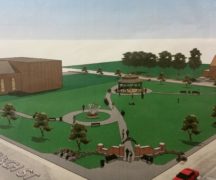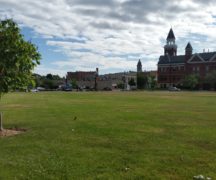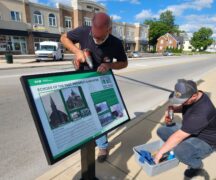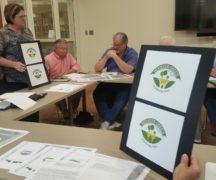By DAVID DUPONT
BG Independent News
Just a few hours after the dedication of the plaque honoring the donors who made the creation of Wooster Green possible, people were out setting up for that night’s Firefly Nights festival on the site.
The ceremony marked the conclusion of the project that began in 2016.
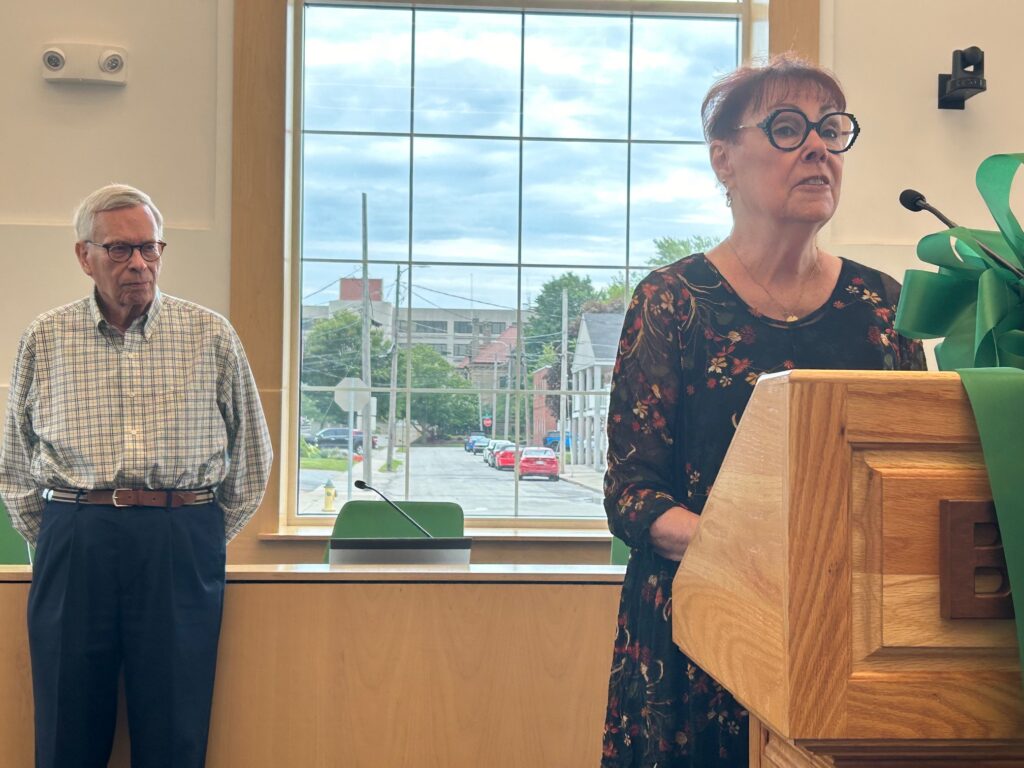
Mayor emeritus Dick Edwards still has the letter from retired English teacher Dianne Vogtsberger suggesting that the former site of junior high be turned into a town square. The school, which originally had been the high school, had been torn down in summer 2012.
He noted that the letterhead indicated the missive was sent from Chatham, Massachusetts where the retired teacher summered. She had been raised in Northport on New York’s Long Island. Both places, she said, had town squares, and both had gazebos. Now eight years later Bowling Green has its own town square with a gazebo.
Sharon Hanna who led the fundraising effort said they started with “blank canvas” and it took $400,000 of private funding to realize this vision.
The space has been well used. John Calderonello, of the Wooster Green Steering Committee, quoted a story in BG Independent by Jan McLaughlin: “It’s a place for the community to come together to celebrate, to mourn, to learn, to appreciate music, to protest a wrong, to rally around a right.” And that was written when “Wooster Green was just a hope and a dream,”Calderonello said.
He offered a sample of the variety of activities the green has hosted: library playtime for kids, food truck Thursdays, a drum circle, a Kiwanis cornhole tournament, concerts, the Juneteenth commemoration, the Rainbow Rally, a solar eclipse watch gathering, a Better BG Bash, a concert celebrating elders, a drug take back, protests for social justice, and rallies for immigrant families.
All these, Calderonello said, are a testament to the success of the original intent.
(The ceremony, which included a ribbon cutting, was planned for Wooster Green but was moved inside city council chambers because of concerns about the weather.)
His fellow committee member Bob Callecod said that all those groups have “used it with respect.”
The space is “very much in its infancy,” he said. “It would be a good thing to see more of what’s already happening.”
He noted that “many people in town are not even aware of it.”
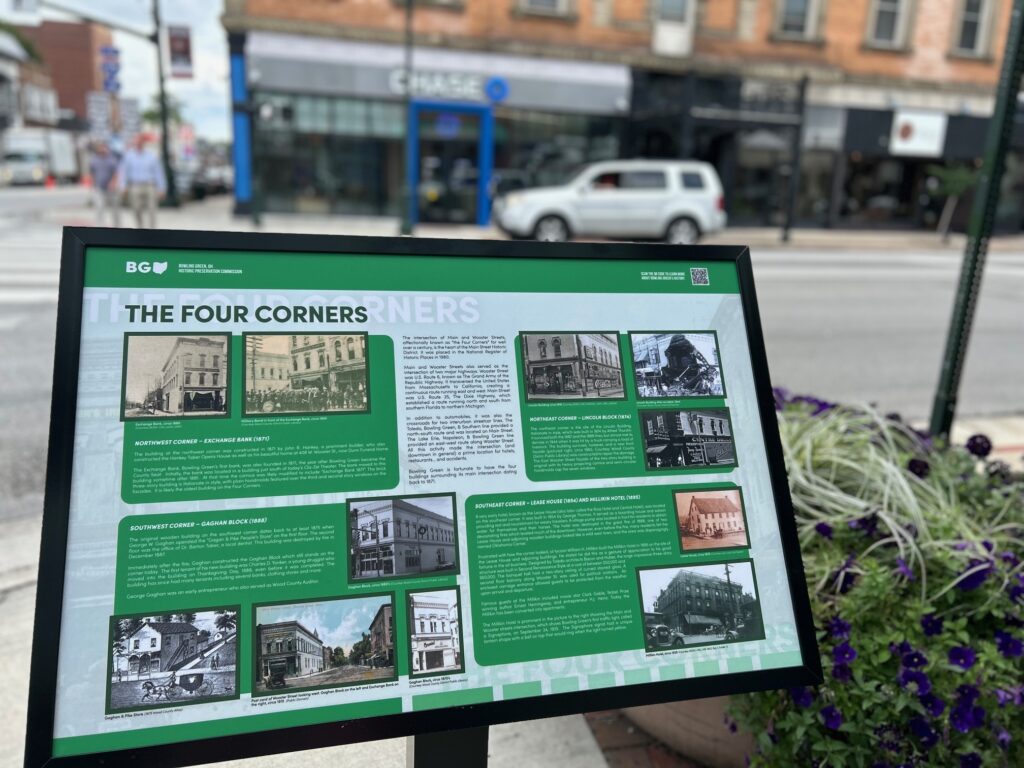
Windows into BG’s past
While Wooster Green is a new feature of the city, the ceremony also marked a celebration of Bowling Green’s history. Sixteen historical interpretive signs have been strategically placed throughout downtown Bowling Green.
John Sampen, who chairs Historic Preservation Committee said the signs serve as “windows into the past.” The signs, which were installed on July 18, “add a historical dimension to the public appreciation of our city.”
They delve into the history both of surviving historic structures as well as structures that are now gone.
Planning Director Heather Sayler said this was a gift to the community. “These buildings are special.”
She added: “Thanks to those of you who take care of these buildings. We know the amount of time, money, and love that goes into these buildings.”
Without them, Sayler continued, “Bowling Green would not be what we are to day, so authentic and a special place to live and do business” as well as attract visitors.
The ceremony itself attracted the great-granddaughter of George W. Gaghan who built the building on the southwest corner of Main and Wooster streets.
Marsha (Coover) Bloxsom, with her husband Walter Bloxsom drove five hours from Lexington, Kentucky, to attend the ceremony.
Her great-grandfather originally operated a shop on the corner by 1875, and when fire destroyed the building in 1887, he immediately built the current structure.
Bloxsom said he sold the building in 1901, and moved to Toledo where she still has family.
Though she was aware of her Bowling Green ties, she had never visited the city until this week.
Her grandfather was a veterinarian. He and her grandmother lived most of their lives in Lexington.
Her husband is a geologist and they acknowledged that much of BG’s wealth grew from oil industry. The image of oil derricks in the courthouse murals would not be unusual in South Texas where she spent much of her life, but is notable in Ohio.
She found out about the dedication only because she had called the city seeking genealogical information for a project she was working on.
While she was very aware of her family’s ties to Bowling Green, she had never been here. But when she learned about the ceremony she knew she and her husband had make the long drive to visit. After all, she said, how many people can say their families were honored in a such a way.


